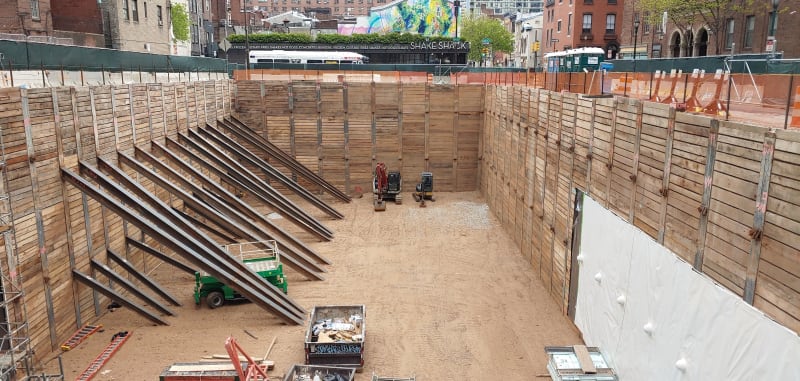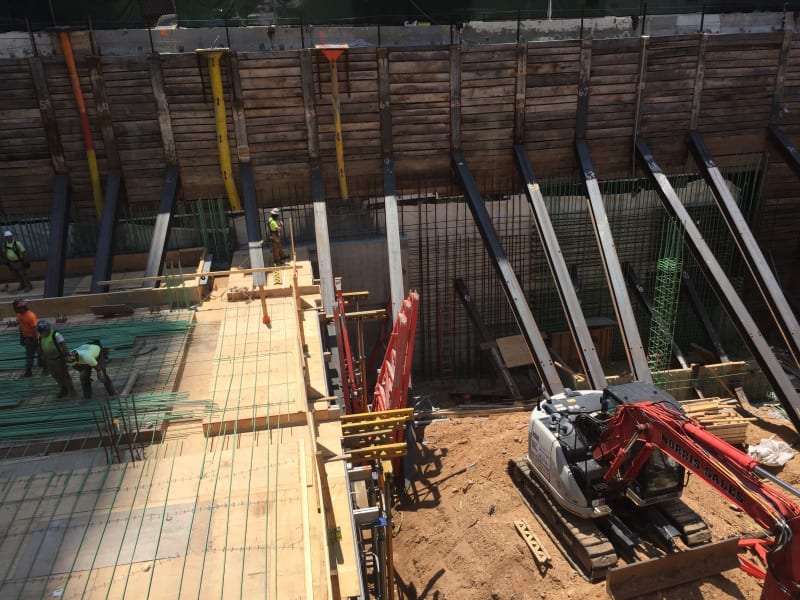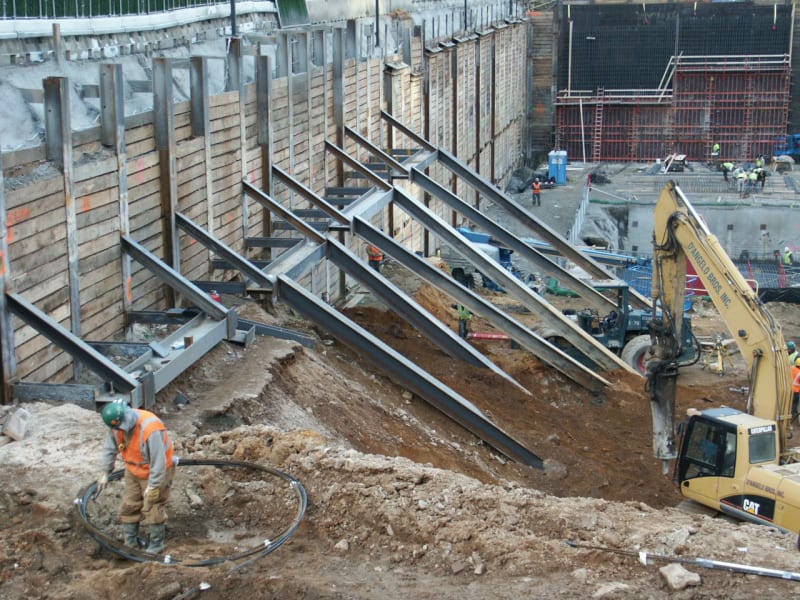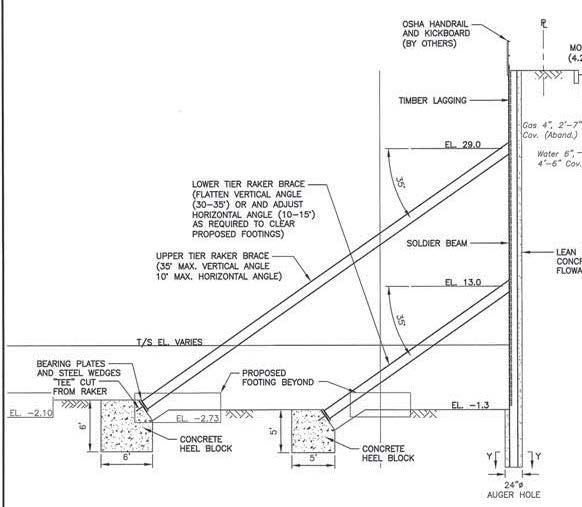If the temporary sheeting wall is about 3' or more off the proposed foundation wall, you can use horizontal walers and spread out the raker braces to one per every other soldier beam. If the sheeting wall is to be located at the face of the new foundation wall, you can't use walers and will need to install rakers at every soldier beam. Raker braces increase the cost of excavation, wall forming and hole patching, floor slab box-outs and patching, waterproofing. Raker brace removal can be costly since the braces have to be cut up into smaller pieces to lug them out of the building. Raker braces need to be installed so that they do not interfere with structural framing, columns, and building corners. Be careful how you brace a corner soldier beam, especially with wall-line sheeting systems. Also, the braces and heel blocks for the raker braces need to be located clear of or under proposed footings, drilled shafts, interior walls & columns, and floor slabs. Therefore, the raker braces may need to be angled horizontally in addition to vertically. Raker braces that support horizontal walers require roll chocks at the soldier beams to prevent upward rolling of the walers. If you want to uses walers with less raker braces for wall-line sheeting, the waler will need to be located inside the building, in front of the foundation wall and its wall forming system. See last photo.
Try to reduce your design to 2 levels of raker braces.
The first 3 photos are of a raker-braced, wall-line sheeting wall (no tiebacks allowed) that is 41.3' high with 2 levels of bracing. The fourth photo is on a wall-line sheeting wall, braced with waler inside the proposed building. Note the roll chocks and the outlooker beams needed to space the waler off the sheeting and inside the proposed foundation wall.
Show this to the concrete contractor!





